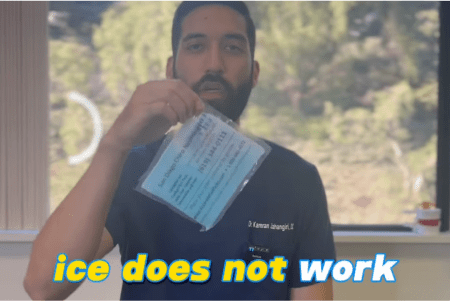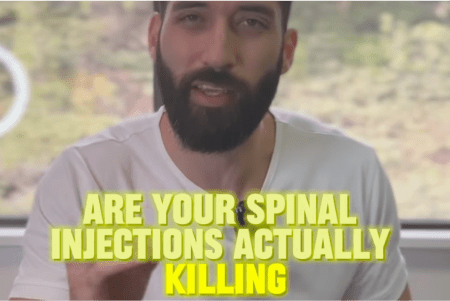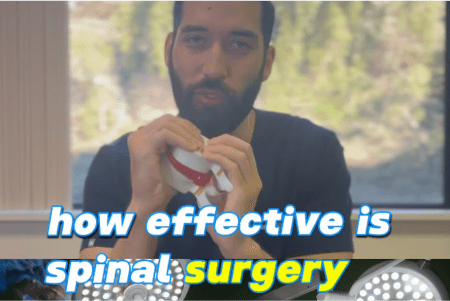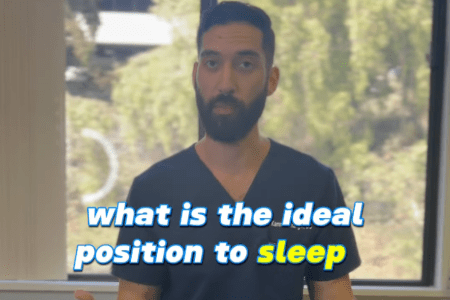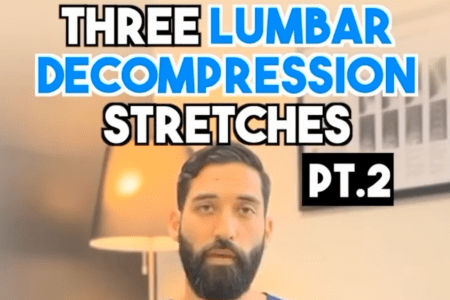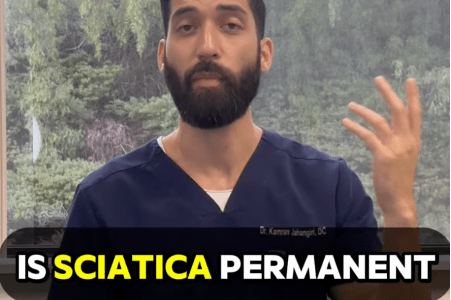Understanding the Sciatic Nerve:
Understanding the sciatic nerve is pivotal for individuals grappling with lower back pain, leg discomfort, or tingling sensations. As the longest and widest nerve in the human body, the sciatic nerve originates in the lower back and extends down each leg, comprising multiple nerve roots connected to the spine.
What is Sciatica?
Sciatica is a condition characterized by pain along the sciatic nerve, extending from the lower back through the hips, down each leg, and sometimes even into the foot. It commonly affects one side of the body, causing discomfort, tingling, and weakness. That being said, some do experience problems on both sides. This often stems from issues like herniated discs, spinal stenosis, or muscle tightness.
Understanding the Sciatic Nerve: Common Symptoms

Causes of Sciatica:
Sciatica is often triggered by disc injuries (disc bulge, disc herniation, disc extrusion, etc), spinal stenosis or spinal nerve impingement, and degenerative disc disease. Injuries and infections can also contribute to its development. In more rare instances, this can be provoked by muscle tightness.
Sciatica vs Piriformis Syndrome:
Harvard Health reports that sciatica is only caused by piriformis syndrome in 5% of cases. 95 out of 100 people will have their own sciatica, which causes knee pain coming from their lower back. If what you have is true sciatica caused by piriformis syndrome, you will only get nerve symptoms below your knee into your foot. There will be no complaints of pain or nerve problems in your lower back, hip, or behind your thigh if you have true piriformis syndrome. For our clinic, the number is closer to 2% of cases that come in with piriformis syndrome that present with sciatic pain.
Sciatica vs Piriformis Syndrome:
Harvard Health reports that sciatica is only caused by piriformis syndrome in 5% of cases. 95 out of 100 people will have their own sciatica, which causes knee pain coming from their lower back. If what you have is true sciatica caused by piriformis syndrome, you will only get nerve symptoms below your knee into your foot. There will be no complaints of pain or nerve problems in your lower back, hip, or behind your thigh if you have true piriformis syndrome. For our clinic, the number is closer to 2% of cases that come in with piriformis syndrome that present with sciatic pain.
Sciatic Related Knee Pain
Sciatica-related knee pain is frequently rooted in lumbar spinal nerve issues, particularly those associated with conditions like disc bulges, herniations, and spinal stenosis. The lumbar spine accommodates nerve roots forming the sciatic nerve, which extends down the legs. When these lumbar nerves undergo compression or irritation, they transmit pain signals, leading to discomfort felt in the knee and lower leg.
It’s essential to recognize that various types of knee pain can stem from lumbar nerve roots. The location and nature of knee pain depend on which specific nerve is irritated or injured. Disc bulges or herniations occur when the inner disc material protrudes, applying pressure on nearby nerves and causing radiating pain, tingling, or numbness along the sciatic nerve, which can manifest in the knee. Similarly, spinal stenosis, characterized by the narrowing of the spinal canal, can compress nerve roots, resulting in pain sensations down the leg and knee. The pain can feel like severe pain, a dull ache, a tight muscle, or even shooting or burning pain.
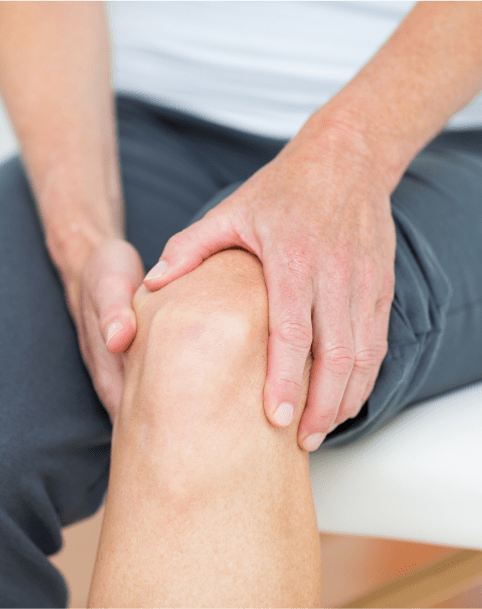
Understanding the diverse manifestations of knee pain originating from lumbar nerve roots is crucial. Different nerves control various aspects of knee sensation, and identifying the specific nerve involved is vital for an accurate diagnosis and a comprehensive treatment plan. This will put you in the best position to relieve the pain and address the root cause for lasting results. Health professionals, employing comprehensive examinations and diagnostic imaging, can pinpoint the exact lumbar spine issues causing knee discomfort, tailoring precise treatment plans for individuals experiencing sciatic pain.
Sciatic knee pain often manifests as a dull ache that can escalate into severe pain, significantly impacting an individual’s mobility and quality of life. To relieve pain associated with sciatica that radiates down to the knee, conventional medicine will first start with pain medication, epidural injections, and/or potentially refer you to a physical therapist to recommend targeted exercises and stretches. These professionals play a crucial role in designing rehabilitation programs that not only focus on alleviating discomfort but also on strengthening the muscles around the spine and knee to prevent future episodes. If this does not help or if the condition worsens, they will potentially refer you to a surgeon to see if you are a good candidate for spinal surgery. This is why we offer alternative treatment options in addition to physical therapy. A holistic approach ensures that patients can return to their daily activities with reduced pain and enhanced function without the need for invasive procedures.

Is Walking Beneficial for Sciatica?
Does Sciatica improve with walking? Walking is generally beneficial for sciatica, promoting healing and relieving pressure on the sciatic nerve. It is typically best to avoid overexertion. The reason why this is so beneficial is due to two different factors. The first is that while you are walking, you are warming up your muscles. Sometimes when your muscles are tight in your lower back, this can irritate the nerves in your spine. The other great benefit of walking is that, to a small extent, you will be pumping your discs that sit in between your vertebrae in your spine. This can help remove waste and replenish/rehydrate the disc.
Is Walking Beneficial for Sciatica?
Does Sciatica improve with walking? Walking is generally beneficial for sciatica, promoting healing and relieving pressure on the sciatic nerve. It is typically best to avoid overexertion. The reason why this is so beneficial is due to two different factors. The first is that while you are walking, you are warming up your muscles. Sometimes when your muscles are tight in your lower back, this can irritate the nerves in your spine. The other great benefit of walking is that, to a small extent, you will be pumping your discs that sit in between your vertebrae in your spine. This can help remove waste and replenish/rehydrate the disc.

The Sciatica Relief Revolution:
Debunking Common Treatment Myths
Think Surgery, Injections, And Medication are Your Only Options for Sciatica Relief? Think Again!
These “traditional” or conventional methods of treating sciatica should be your last resort! Click each one to learn the truth behind the myths about sciatica treatment and relief.

Spinal Surgery
The goal of spinal surgery in the context of sciatica is to alleviate the pressure on the sciatic nerve that is causing pain
Top 4 Non Invasive Treatments That Can Provide Immediate Relief:

Non Surgical Spinal Decompression
A cutting-edge therapy that employs a state-of-the-art motorized table to gently stretch and decompress your spine, providing soothing relief, reducing nerve pressure, and promoting the natural healing of herniated or bulging discs. This is a foundational treatment for anyone trying to relieve their sciatica.

Low Level Laser Therapy
Non-invasive treatment that utilizes low-intensity lasers to stimulate cellular activity and reduce inflammation, effectively relieving sciatica by promoting tissue through improved blood flow and promoting nerve regeneration.

ARPwave Direct Current Stimulation
Breakthrough method that harnesses the power of low deep penetrating electrical currents to target and soothe nerve activity, offering you a life-changing solution for reducing pain and inflammation associated with nerve irritation.

Physical Therapy
Involves targeted exercises and stretches to enhance flexibility and strengthen the back.

Top Sciatica Exercises and Stretches for Instant Relief:
Sciatica is typically caused by a pinched lower back nerve. As a result, historically, most cases are provoked by stretching low back pain. More often than not, our patients do best with exercises that help strengthen the core and lower back region as opposed to stretching them. Listed below are some of our most recommended sciatica treatment options with regards to exercises.
Curl-Up Core Bracing Exercise
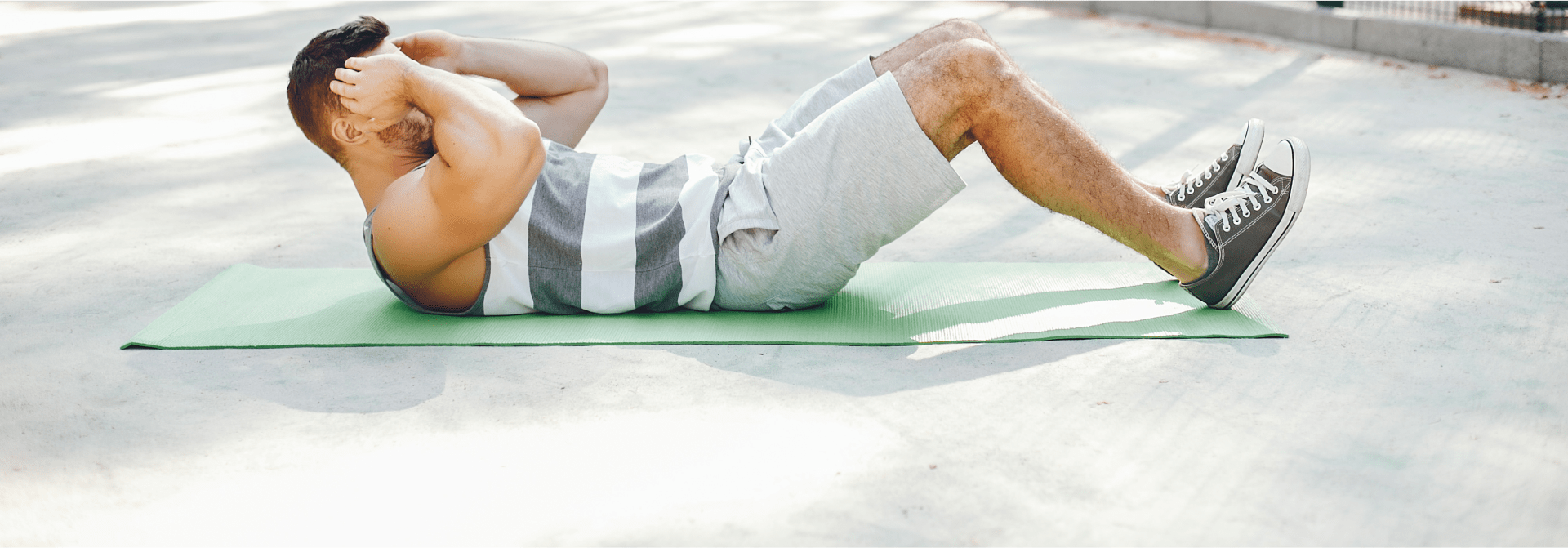
Positioning
1. Lie on your back on a flat surface, such as a mat or the floor.
2. Bend your knees, keeping your feet flat on the ground.
Starting Position
3. Place your hands under the curve of your lower back for support, maintaining the natural arch of your spine.
Bracing
4. Engage your core muscles by gently pulling your navel toward your spine. This helps to stabilize your spine during the exercise.
Head and Neck
5. Support your head and neck with one hand, allowing the other hand to rest on your abdomen.
6. Keep your chin slightly tucked, maintaining a neutral spine position.
Execution
Repetition and Sets
Breathing
Tips
Caution
Beginner Side Bridge Exercise (Knee Version)
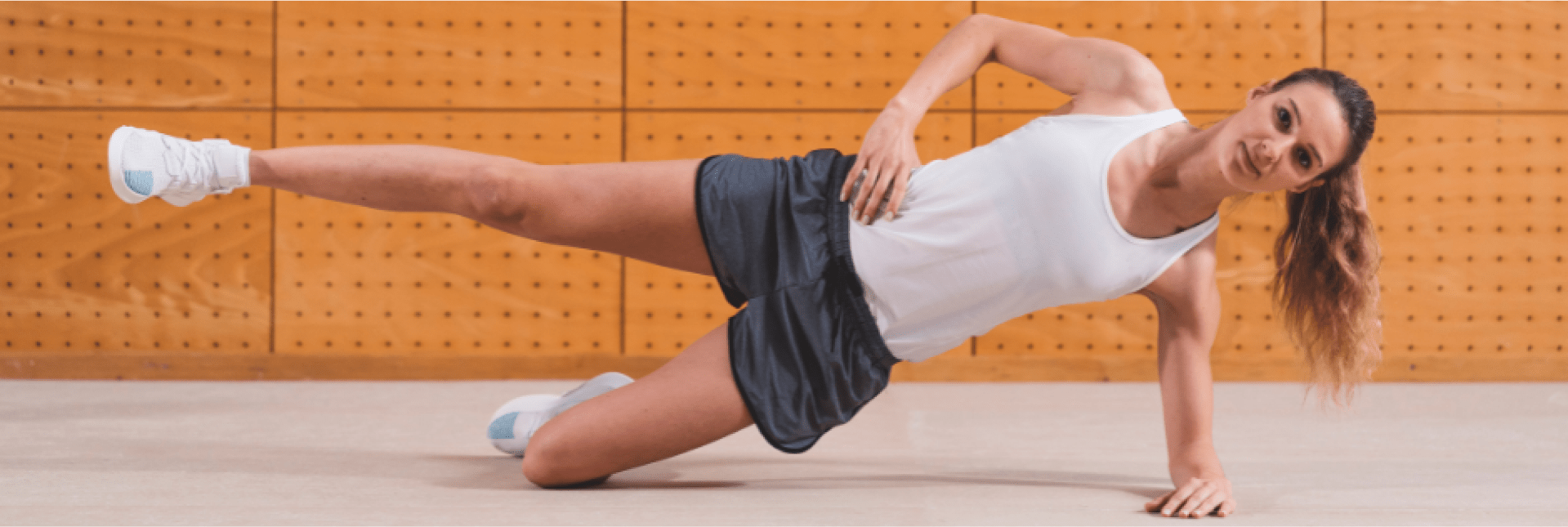
Starting Position
1. Begin by lying on your side with your elbow directly beneath your shoulder.
2. Bend your knees to a 90-degree angle and stack them on top of each other.
3. Keep your body in a straight line from head to knees.
Execution
4. Lift your hips off the ground, creating a straight line from your head to your knees.
5. Support your body weight on your forearm and the side of your bottom and knee joint/thigh.
Alignment
6. Ensure your shoulder, hip, and knee are in a straight line perpendicular to the ground.
7. Keep your core engaged by pulling your navel toward your spine.
Hold
8. Hold the side bridge position for as long as you can maintain proper form.
9. Aim for a duration of 15-30 seconds initially, gradually increasing as your strength improves.
Breathing
10. Breathe regularly and avoid holding your breath.
Switching Sides
11. After completing the exercise on one side, switch to the other side and repeat the steps.
Repetition and Sets
12. Perform 2-3 sets on each side, depending on your fitness level.
Tips
Caution
Neutral-Spine Deadbug Exercise

Starting Position
1. Lie on your back on a mat or the floor with your arms extended straight up toward the ceiling.
2. Bend your knees at a 90-degree angle, lifting your legs off the ground with your shins parallel to the floor.
3. Ensure your lower back is in contact with the mat, maintaining a neutral spine.
Arm and Leg Movement
4. Lower your right arm backward, reaching it overhead while simultaneously straightening your left leg, lowering it toward the ground.
5. Keep your lower back pressed against the mat throughout the movement.
6. Return to the starting position by bringing your right arm and left leg back to the initial position.
Breathing
8. Exhale as you lower your arm and leg.
9. Inhale as you return to the starting position.
Hold
8. Hold the side bridge position for as long as you can maintain proper form.
9. Aim for a duration of 15-30 seconds initially, gradually increasing as your strength improves.
Breathing
10. Breathe regularly and avoid holding your breath.
Repetition and Sets
11. Complete the exercise for 10-15 repetitions on each side.
12. Aim for 2-3 sets, adjusting based on your fitness level.
Tips
Caution
Duration of Sciatica and how long should it last
The duration varies, with acute cases resolving in weeks and chronic cases lasting months, years, or occasionally never going away. This is highly dependent on age, comorbidities, severity of injury, posture, core stability, and many other factors. Those that last more than a month or suffer from reoccurring symptoms should consult with a healthcare provider.
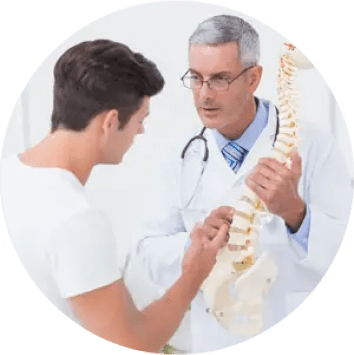
Immediate Relief Tips for Sciatica Pain
To perform the Supine Low Back Decompression Stretch, follow these steps:
1. Lay on your back.
2. Bend your knees just past 90 degrees with your feet flat on
the floor.
3. Place the web of your hand just above the top of your pelvis and just below your ribs on the side of your abdomen.
4. Push your hands toward your feet in the same direction parallel to the ground. You only need to apply about 20-30% force.
5. Hold the stretch for 15-30 seconds maintaining a gentle push
6. Release the stretch and repeat as needed.
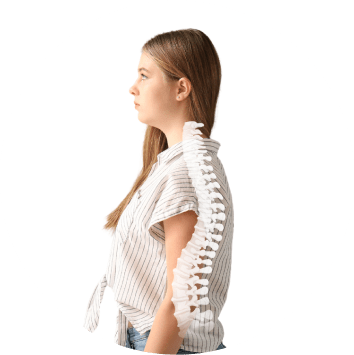
Sciatica Pain Relief Strategies

Can You Permanently Cure for Sciatica
While some cases resolve with time and conservative treatments, addressing the root cause is always essential for long term results. If you are suffering from persistent symptoms, unraveling why and where it is coming from is going to be crucial. If nobody ever looks under the hood of your car how are you supposed to be able to fix it properly?

Final Stages of Sciatica:
Once patients have graduated from care with our clinic we refer them over to a PT that will help them bullet proof their lower back and prevent further damage. Continued physical therapy and lifestyle adjustments are pivotal for long-term relief. At the core (PUN intended) of any successful Sciatica story is going to be a strong and functional body.
For personalized advice and treatment options, consult a healthcare professional.
Final Stages of Sciatica:
Once patients have graduated from care with our clinic we refer them over to a PT that will help them bullet proof their lower back and prevent further damage. Continued physical therapy and lifestyle adjustments are pivotal for long-term relief. At the core (PUN intended) of any successful Sciatica story is going to be a strong and functional body.
For personalized advice and treatment options, consult a healthcare professional.







